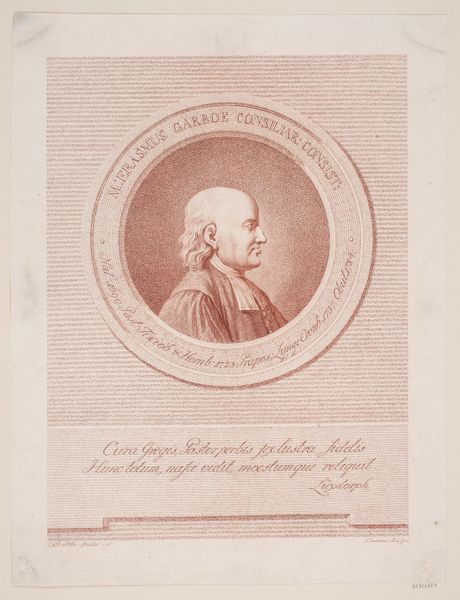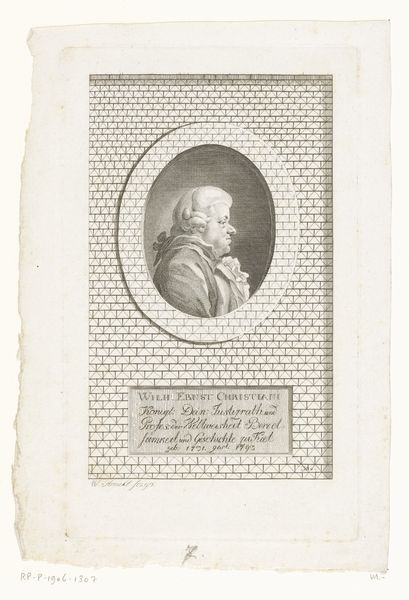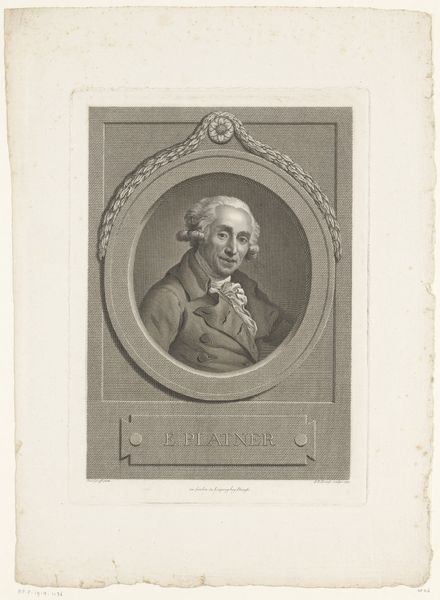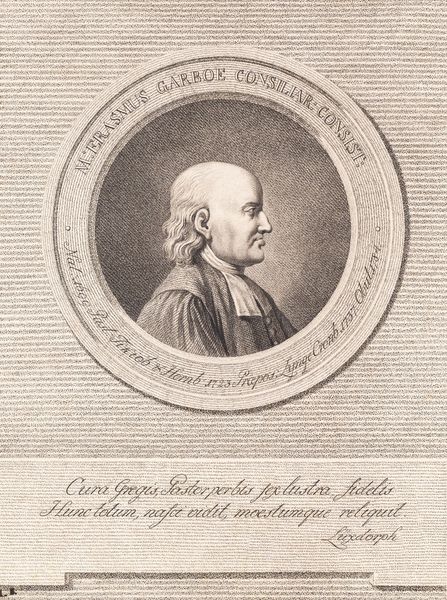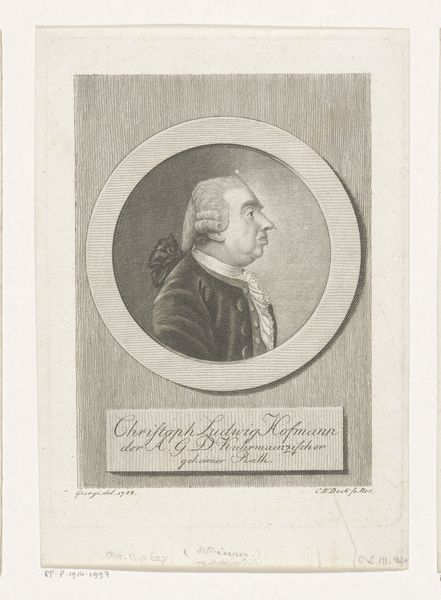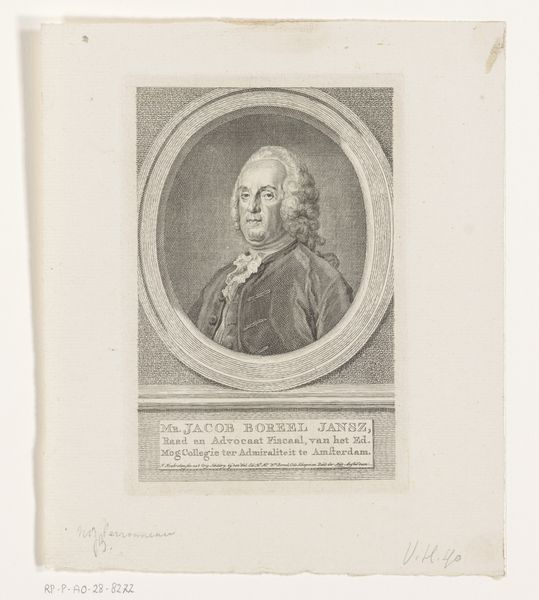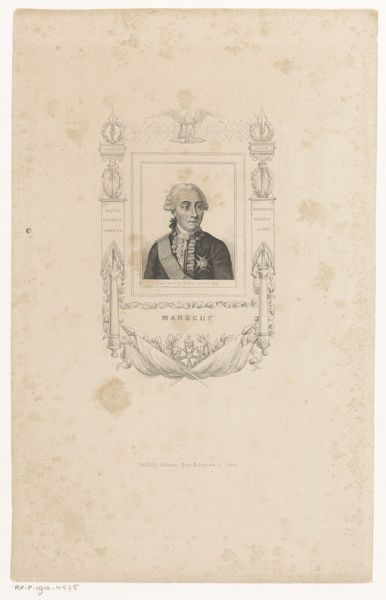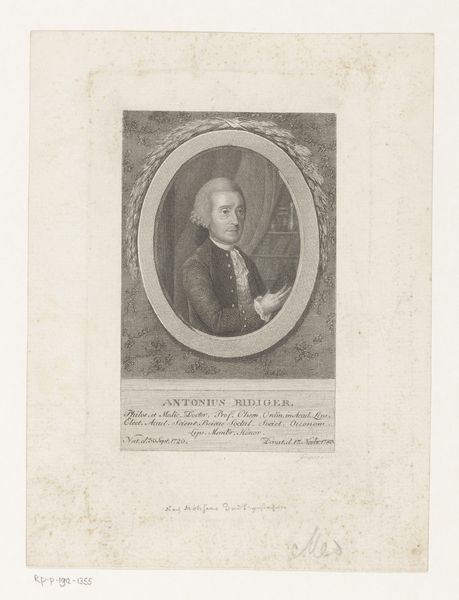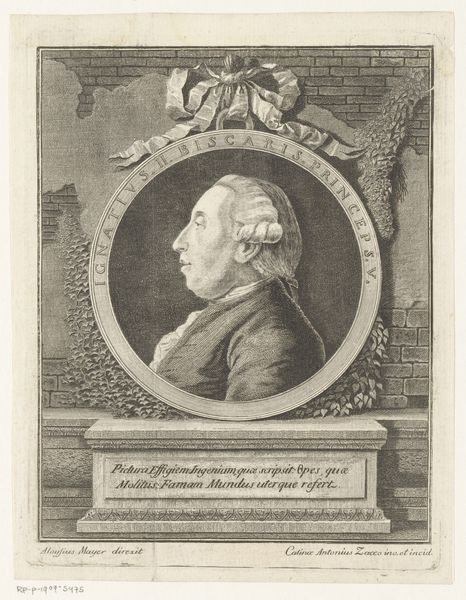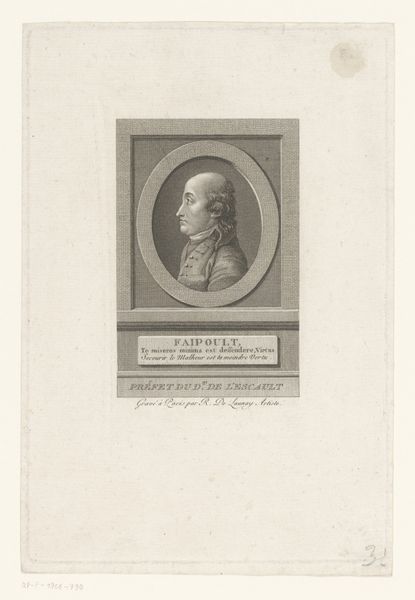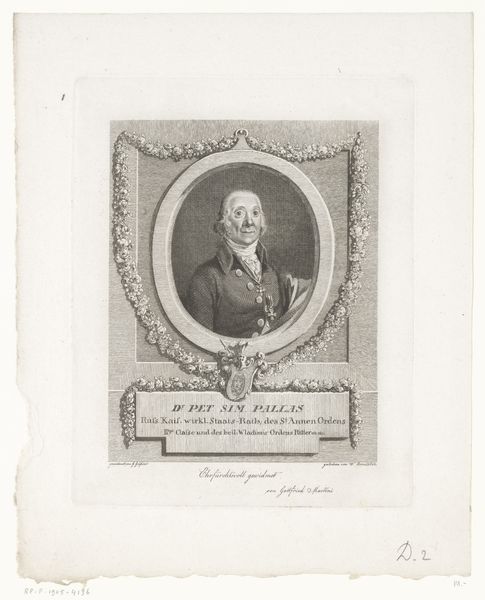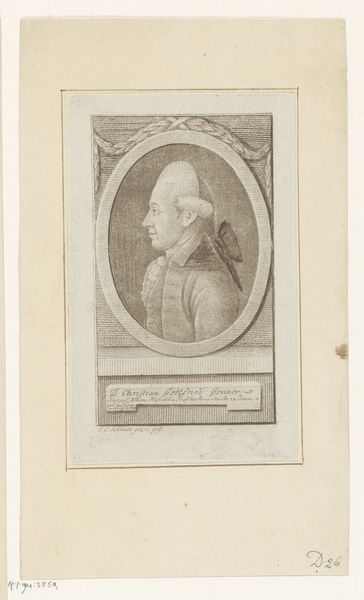
print, engraving
#
portrait
#
neoclacissism
# print
#
engraving
Dimensions: 293 mm (height) x 224 mm (width) (billedmaal)
Editor: This is an engraving titled "Rasmus Garboe," created between 1784 and 1785 by J.F. Clemens. It's a portrait set within a circular frame. The print has a monochromatic reddish hue. It looks like it's trying to project authority, doesn't it? I'm curious, what societal aspects jump out at you when you look at it? Curator: Well, I immediately think about the politics of portraiture during the Neoclassical era. The rigid formality, the profile view, even the Latin inscription, all speak to an attempt to project an image of civic virtue and learned authority. Prints like this one, being relatively inexpensive compared to painted portraits, played a crucial role in disseminating images of prominent figures, solidifying their status within the broader public consciousness. Editor: So, it was a form of public relations in a way? Building a brand for someone through art? Curator: Exactly! And Clemens, the artist, was quite skilled at leveraging the clean lines and idealized forms of Neoclassicism to reinforce these notions. Notice the circular frame, like a coin; it's a visual strategy intended to legitimize the subject. Does that framing remind you of anything? Editor: It does have that "official" stamp to it. I see what you mean. What do you think a commoner, perhaps illiterate, might have gotten from this image if they saw it? Curator: Even without being able to read, the visual cues – the dignified profile, the formal presentation, the very *aura* of the piece – would have communicated a sense of importance and societal standing. It highlights the power of images to communicate political and social hierarchies, regardless of literacy. Editor: I never thought about how impactful a portrait, even a printed one, could be on solidifying someone's social position back then. I guess art always has some social implications, doesn’t it? Curator: Absolutely. It's all about understanding the intended audience and the context in which the work was produced and circulated. It definitely gives new appreciation of these portrait engravings.
Comments
No comments
Be the first to comment and join the conversation on the ultimate creative platform.
